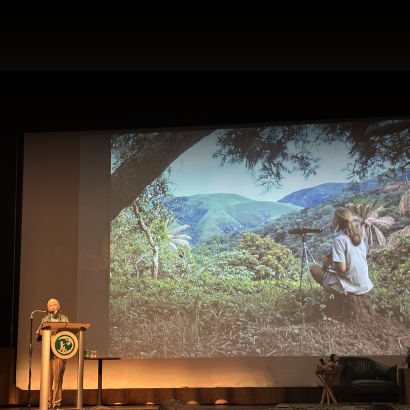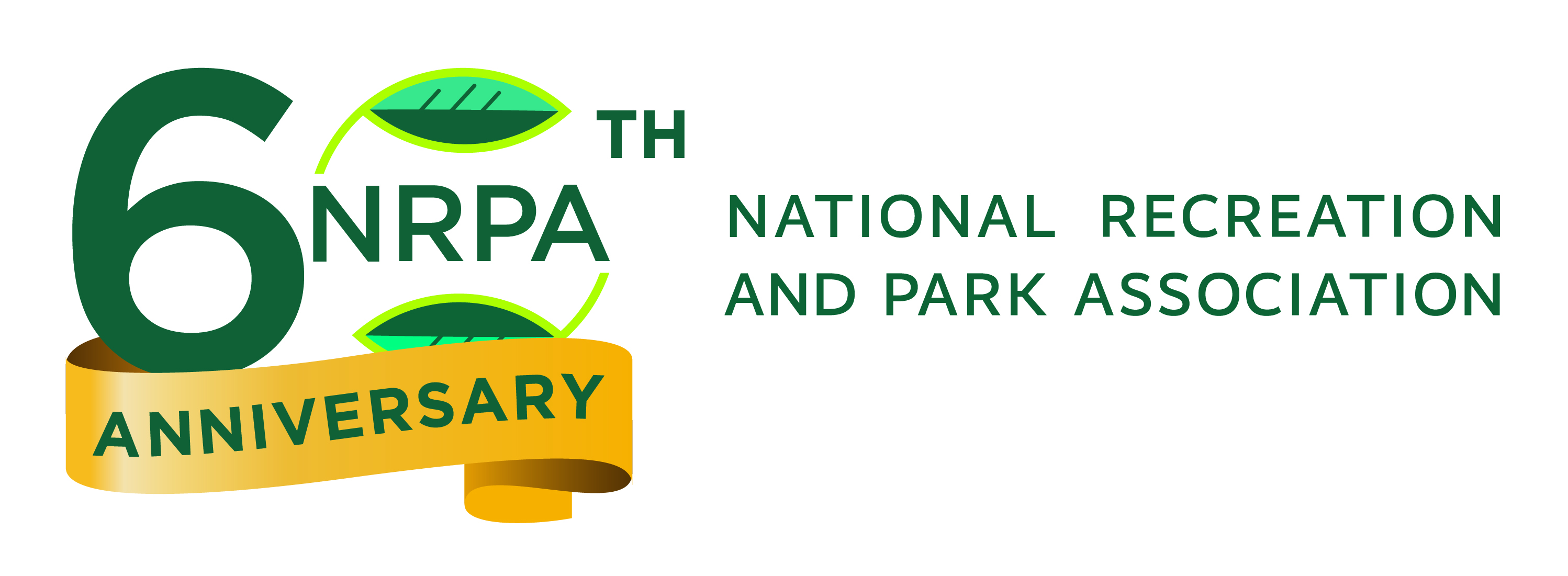
Pictured: Dr. Jane Goodall speaks at Pasadena High School in California in March 2025. Photo by Clement Lau.
Earlier this year, I had the privilege of hearing Dr. Jane Goodall speak in person. Her presence was quiet yet powerful — the kind that drew people in with stories, humility, and a deep sense of hope. Her passing on October 1 at the age of 91 is a tremendous loss. Yet for all of us who care about parks, conservation and sustainability, her legacy continues to guide and motivate our work.
Changing How We See Nature
Goodall revolutionized our understanding of chimpanzees and, in doing so, reshaped how we see ourselves. She showed that chimpanzees — once thought to be vastly different from humans — have emotional depth, use tools and form complex social bonds. This discovery blurred the line between “us” and “them,” reminding the world that all living beings are connected.
For those of us who plan, design and advocate for parks and open spaces, this perspective remains powerful. Our work is not only about providing places for recreation but also about protecting and restoring the ecosystems that sustain life. Parks are living laboratories of nature, and every restored wetland, expanded forest canopy or river trail strengthens the web of life that Goodall dedicated her career to understanding.
As she once said, “You cannot get through a single day without having an impact on the world around you.” Those words capture the essence of our work: the choices we make in shaping landscapes and policies ripple outward, influencing both human and natural communities.
Connecting Biodiversity and Community
One of Goodall’s most enduring lessons was that no species exists in isolation. Conserving wildlife depends on the health of the landscapes around them.
Across the country, park and recreation professionals, planners and advocates are putting this principle into practice — building wildlife corridors that link fragmented habitats, restoring native plant communities in urban areas, and creating parks that support pollinators. Every community greenway or tree planting echoes Goodall’s message that the well-being of people and wildlife are inseparable.
This same thinking is shaping the Los Angeles County Community Forest Management Plan, which I am helping to implement. The plan focuses not just on planting trees, but on expanding canopy where it is most needed while using native species that nurture local ecosystems. In doing so, it bridges community health and environmental stewardship — a balance that Goodall championed throughout her life.
Our collective efforts to protect and advance biodiversity also build on years of studying and meeting park needs at the local and regional levels. Through projects such as the L.A. Countywide Parks and Recreation Needs Assessment, Parks Needs Assessment Plus, and the Community Parks and Recreation Plans, we have identified areas most lacking in park access and prioritized investments in those communities. This data-driven approach ensures that new parks and open spaces are not only intentionally distributed, but also designed to support thriving ecosystems — an approach that mirrors Goodall’s belief that people and nature must thrive together.
Finding Hope Through Action
Goodall often spoke of hope — not as blind optimism, but as deliberate, purposeful action. She knew climate change, habitat loss and community challenges were immense. Yet she believed deeply in the ability of individuals and communities, especially young people, to make a difference.
That spirit is also at the heart of parks and recreation. Through youth conservation corps programs, community forestry and environmental education, park agencies and advocates across the nation are cultivating the next generation of stewards. Parks are not just green spaces; they are classrooms for care, where responsibility and possibility take root.
I see echoes of Goodall’s message in the OurCounty Sustainability Plan, L.A. County’s roadmap for climate action and resilience. In updating the plan, our work emphasizes the connections between ecosystems, public health and access to nature — reinforcing that caring for people and the planet must go hand in hand. The hope we cultivate in our communities becomes a strategy for building a more resilient and biodiverse future.
As Goodall reminded us, “The least I can do is speak out for those who cannot speak for themselves.” For those of us engaged in park and sustainability advocacy, her words are a call to ensure that the needs of the natural world — from oak trees to wildlife — are recognized and reflected in our planning and policy decisions.
Restoring Land and Renewing Community
Jane Goodall’s life’s work was grounded in the belief that restoring nature restores our own humanity. That same spirit drives many communities to reclaim and heal damaged land.
In L.A. County, we have significant projects like the Earvin “Magic” Johnson Recreation Area, which was created on the site of a former oil tank farm, and the future Puente Hills Regional Park, which will transform one of the nation’s largest landfills into a landmark park that renews both the landscape and the community. These efforts are not only about building parks; they are about healing land, improving health, and strengthening bonds between people and nature. They embody Goodall’s conviction that environmental restoration and community well-being are inseparable.
Carrying Forward a Legacy of Care
Jane Goodall once said, “What you do makes a difference, and you have to decide what kind of difference you want to make.”
For those of us who plan, build and advocate for parks, the difference we make is both local and global. Parks provide places for play, health and connection while advancing biodiversity and climate resilience. Each tree planted, each acre restored, each trail opened contributes to a larger legacy of care — the very legacy Jane Goodall championed.
Her passing reminds us that conservation and community are intertwined. To honor her, we must continue caring for and creating parks and open spaces that nurture both people and the planet, ensuring that the next generation inherits not only places to enjoy, but ecosystems that sustain life.
Clement Lau, DPPD, FAICP, is a Senior Analyst with the Los Angeles County Chief Sustainability Office. He was previously a Departmental Facilities Planner with the County’s Department of Parks and Recreation.


